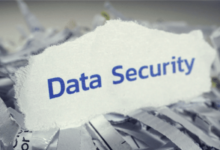Active Liveness Detection – An Enhanced Identity Verification Method

Liveness detection is a system or technology introduced to detect whether the collected biometric data is from a live, genuine individual. It ensures that the data is authentic and associated with a real person. This technology enhances security, promotes better protection of data, and averts fraud.
Moreover, active liveness detection primarily requires user interaction and works to discover the signs of life in an individual. This particular investigation needs some bodily movements or gestures that are difficult for a replica to imitate and can detect fraudulence in seconds. Along with the bodily movements, this investigation also requires voice verification and keystroke examination of an individual.
How Does This Technology Work?
Active detection follows some steps to examine a spoof. Here are some steps to follow while preceding this detection such as movement examination, 3D sensing, machine learning, texture investigation, and challenge-response assessment.
- Movement Evaluation
Movement evaluation is done by asking the individual to make specific movements like smiling, moving the head, and blinking the eyes. These movements can easily detect a fake AI model.
- Machine Learning
Particular algorithms are being enabled in the system to detect liveness. This machine-learning AI can easily detect 2D and 3D textural differences without user interaction.
- 3D Depth Sensing
This investigation records the 3D structure of the face and can easily point out whether the image is 2D or a fake video.
- Texture Examination
It involves the analysis of data provided by an individual such as the fingerprint or skin texture. One can easily observe the difference between an AI-generated image and an authentic image or video. It can be seen that there are pores on the skin and the dampness on the skin of a real person. All these aspects can never be noticed in a deepfaked image or a video.
- Challenge-Response Assessment
This assessment allows the individual to make certain movements or to speak some phrases. In this way, the technology can easily detect genuine movement and the fake robotic movement of lips, neck, head, etc.
How Face Liveness Detection is Useful for Banks?
In today’s context, frauds are becoming very common and every sector or organization is going through such security issues. Numerous sectors need to be protected and secured like banks containing the financial data that must be protected at any cost.
Moreover, this particular detection can help in maintaining high-security checks. It makes sure that the payment or transaction that is conducted, is from the authentic individual. It detects the face and the biometric data collected by the bank, assuring that a certain action is performed by the rightful owner of the account.
Furthermore, many healthcare sectors are using this technology to prevent fraud. In hospitals, it can verify the patient’s identity and the records to prevent medical theft. It can also work well during online sessions with the doctors ensuring that the patient is real and not a 2d image or a video. Besides, travel and hospitality companies can also be secured by using this technology. It can detect fake identities at airports and hotel check-ins as well.
The Future of This Technology
AI is being used in almost all over the world. It plays an essential role in various sectors. It has come a long way and still trying to grow. Apart from the banking and other financial sectors, this technology will likely spread to the rest of the sectors such as government sectors, education, and many more.
However, it will be introduced in the mobile banking apps to ensure the security systems. It can also be integrated into blockchain systems to prevent fraud by securing biometric data and only be accessed by the rightful person.
Conclusion
Activeness liveness detection plays a vital role in preventing fraud and identity theft. It is a robust advancement in the field of security and safety of the users. It works by ensuring that the person present in front is authentic. This process includes various methods like motion, texture, and other evaluations. This detection process focuses on the nitty-gritty of individuals to ensure that he or she is alive and real.
In addition, photo liveness verification has now become a common way of verifying the true identity of an individual. It targets the trivial aspects and features of the face to detect fraudulence. Within the upcoming time, this technology will likely grow more and prove itself in the rest of other areas as well.





